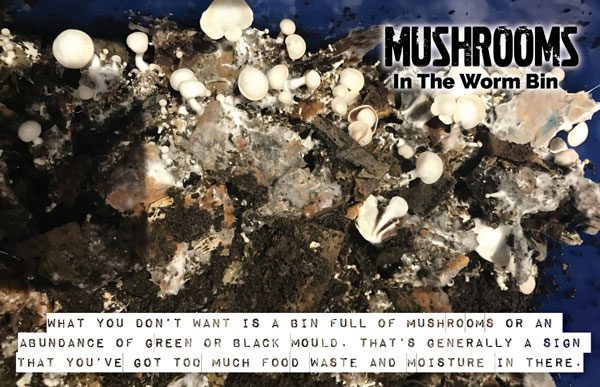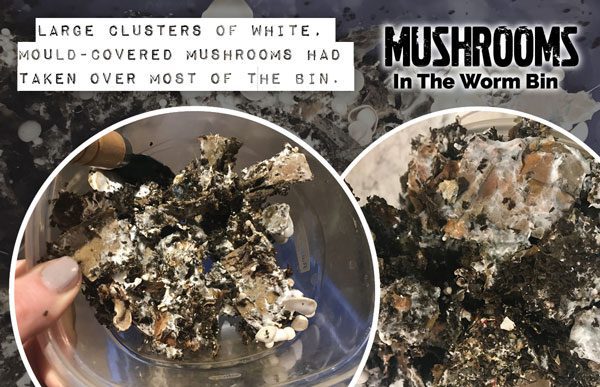I’ve experienced a roller coaster of emotions when it comes to my worm compost bin. First, there was the fear of failure. When castings appeared, there was excitement. But complete and utter panic set in when I found mushrooms growing in the bin.
That’s right. Mushrooms. Not just a few of them, either. Large clusters of white, mould-covered mushrooms had taken over most of the bin.
I was panicked but also devastated. I had worked so hard making my bin and keeping my worms well-fed and the environment just right. I wanted to use the rich castings in my gardens, but I also didn’t want my worm friends to die. That’s just plain sad.
What Went Wrong?
Besides the sudden appearance of the fungi, everything else in the bin was fine.
The worms were active and shied away the second any light hit them. The red wigglers weren’t trying to escape. Everything was status-quo, except for those dang mushrooms.

I had recently added new bedding to my bin. Instead of using shredded newspaper, I had cut cardboard toilet paper and paper towel rolls into small strips, dampened them, and thrown them in.
That was the cause: cardboard damp with the juices of the decomposing fruits and vegetables.
No Harm, No Foul
After talking to some fellow vermicomposters, I learned that not all hope was lost.
The worms share their space with so many different microorganisms. In certain conditions, “the others” can thrive.
I even noticed that a lot of the worms seemed to be snacking on the mushrooms.

What you don’t want is a bin full of mushrooms or an abundance of green or black mould. That’s generally a sign that you’ve got too much food waste and moisture in there.
If it happens, remove some of the food and add some fresh bedding.
Action Plan
Even though the worms weren’t necessarily bothered by the mushrooms, I was. I decided to remove most of them from the bin, and I added freshly shredded newspaper to help soak up some of the extra moisture.
In no time at all, I had a bin full of beautiful, super-boosting worm castings.
And no mushrooms.